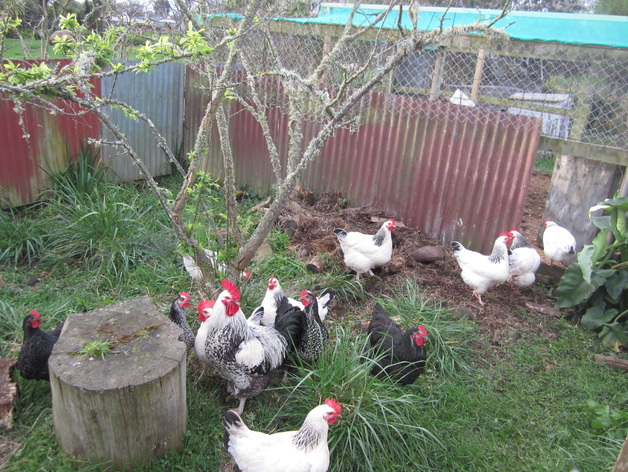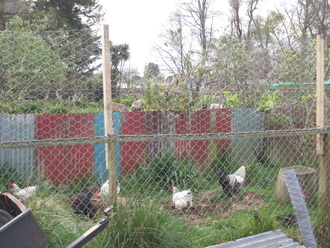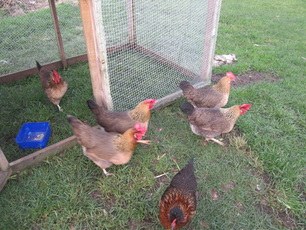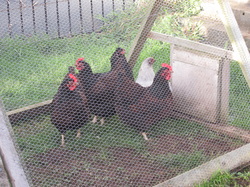The second time we moved into a place and inherited an existing flock of chickens, they included a matronly Barred Rock hen whom I named "Granny" as she appeared to be the matriarch of the flock. Eventually I decided to find out how old she was, and after numerous phone calls back through various owners I found the couple who had first rescued her from a battery hen farm - over 17 years earlier!! They couldn't believe she was still alive - and I couldn't believe she was still laying eggs! In fact, that year she went on to co-mother our very first batch of chicks (17 of them). 5 of the hens had gone broody and kept sharing the nesting boxes of eggs. When it came time to move them and the about-to-hatch eggs to a safer location, I felt sorry for them all and so moved them all together. When the chicks hatched, they shared them with no bickering. If they sensed danger, 4 would rush to a corner, spread their wings and call the chicks to them, uniting to hide them. The fifth hen would rush to the foreground and puff up, peck and cluck like an angry watchdog. It was adorable to see - and in my complete chicken novice-hood I didn't realise it was unusual!

Above is a picture of some of the main flock. The black hen to the right is a Light Sussex/Barred Rock cross that we raised from a chick along with four white Light Sussex chicks, all of whom were given to us by a friend, initially to raise for the freezer, but then someone else gave us a beautiful Light Sussex rooster, so I decided to keep the young hens and begin breeding my own for meat. The black hen went broody last year, and raised 5 chicks, of whom the rooster pictured was one. So he would be 3/4 Light Sussex, 1/4 Barred Rock, and I think he's really pretty. The hens you see here are all either the original Light Sussex hens, or offspring from the Light Sussex rooster - so some are purebred, and some are crosses either with the Barred Rock (she had another 3 chicks earlier this year) or my Brown Leghorns, one of whom raised 14 chicks this year. There are 15 chickens in this group - their purpose is for both meat and eggs; this year's pullets are just starting to lay.


The chicken in the foreground is one of the Silky Bantam cross pets. The Leghorns were given to me by a friend, so I could put them in the freezer or get rid of them for her - she thought they were too old and not laying. I thought they were pretty and decided to keep them for a while and see if they were laying - that was 2 years ago (they are over 5 years old) and they are still laying very strongly. I really have more hens then I need, so no sure how long I'll keep these girls - or may keep just a couple for breeding purposes if it turns out last year's crosses are particularly excellent hens. These girls are very accomplished in flight too - and they taught the Sussex hens all their bad habits!

I don't intend to keep this many chickens though - really I just need a rooster plus 6 hens for breeding meat birds, and another 6 high laying ones for eggs. It can be tough sometimes deciding which ones should stay and which should go!
 RSS Feed
RSS Feed
